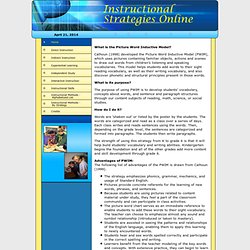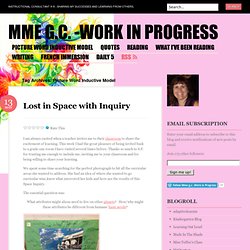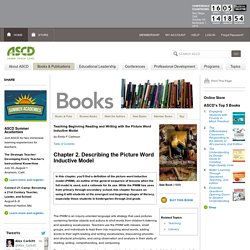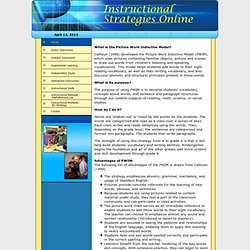

www.pagegifted.com/uploads/1/1/6/0/11600328/inductivedeductive.pdf. www4.ncsu.edu/unity/lockers/users/f/felder/public/Papers/InductiveTeaching.pdf. Inductive & Deductive Learning. Two very distinct and opposing instructional approaches are inductive and deductive.

Both approaches can offer certain advantages, but the biggest difference is the role of the teacher. In a deductive classroom, the teacher conducts lessons by introducing and explaining concepts to students, and then expecting students to complete tasks to practice the concepts; this approach is very teacher-centred. Conversely, inductive instruction is a much more student-centred approach and makes use of a strategy known as ‘noticing’. Let’s take a closer look at the differences between inductive and deductive instruction, and find out how noticing can be used in the language classroom to better facilitate student learning. What is deductive instruction? A deductive approach to instruction is a more teacher-centered approach. What is inductive instruction?
In contrast with the deductive method, inductive instruction makes use of student “noticing”. Picture Word Inductive Model (PWIM) What is the Picture Word Inductive Model?

Calhoun (1998) developed the Picture Word Inductive Model (PWIM), which uses pictures containing familiar objects, actions and scenes to draw out words from children’s listening and speaking vocabularies. This model helps students add words to their sight reading vocabulary, as well as their writing vocabulary, and also discover phonetic and structural principles present in those words. What is its purpose? The purpose of using PWIM is to develop students’ vocabulary, concepts about words, and sentence and paragraph structures through our content subjects of reading, math, science, or social studies. How do I do it?
Words are ‘shaken out’ or listed by the poster by the students. The strength of using this strategy from K to grade 6 is that it will help build students’ vocabulary and writing abilities. Advantages of PWIM: The following list of advantages of the PWIM is drawn from Calhoun (1999). How can I adapt it? Teacher Resources. Syntaxe. Picture Word Inductive Model 15. Picture Word Inductive Model. The First Phase of the Picture Word Inductive Model Shake out and See Say Spell Shake out-It is important that the photograph be a representation of reality and a source of information.

It should contain curricular content from any combination of the subject areas. The picture leads to research and critical thinking. It provides students with something from which to inquire, leading to further discussion and research. The picture should build an understanding of our place in the world, showing children our similarities as human beings for example-many children have never been to the ocean but they will still be able to recognize and name familiar things in an unfamiliar place. Rather than referring to the photograph as the PWIM photograph use one of the titles created in class such as our Shark picture. Information is pulled from out of the picture. Students do not write on the chart as it is essential that they are seeing correct letter formation and spelling being modeled. Like this: Visage PWIM. Eau PWIM. Thèse qui évalue PWIM. Picture Word Inductive Model (PWIM) Describing the Picture Word Inductive Model.
By Emily F.

Calhoun The PWIM is an inquiry-oriented language arts strategy that uses pictures containing familiar objects and actions to elicit words from children's listening and speaking vocabularies. Teachers use the PWIM with classes, small groups, and individuals to lead them into inquiring about words, adding words to their sight-reading and writing vocabularies, discovering phonetic and structural principles, and using observation and analysis in their study of reading, writing, comprehending, and composing. The picture word inductive model can be used to teach phonics and spelling both inductively and explicitly. However, the model is designed to capitalize on children's ability to think inductively. Figure 2.1. For example, teachers using the model to develop sight-word vocabulary and to work on phonemic and graphemic awareness may stop at Step 7. Picture Word Inductive Model (PWIM) What is the Picture Word Inductive Model?

Calhoun (1998) developed the Picture Word Inductive Model (PWIM), which uses pictures containing familiar objects, actions and scenes to draw out words from children’s listening and speaking vocabularies. This model helps students add words to their sight reading vocabulary, as well as their writing vocabulary, and also discover phonetic and structural principles present in those words. What is its purpose? The purpose of using PWIM is to develop students’ vocabulary, concepts about words, and sentence and paragraph structures through our content subjects of reading, math, science, or social studies. How do I do it? Words are ‘shaken out’ or listed by the poster by the students. The strength of using this strategy from K to grade 6 is that it will help build students’ vocabulary and writing abilities.